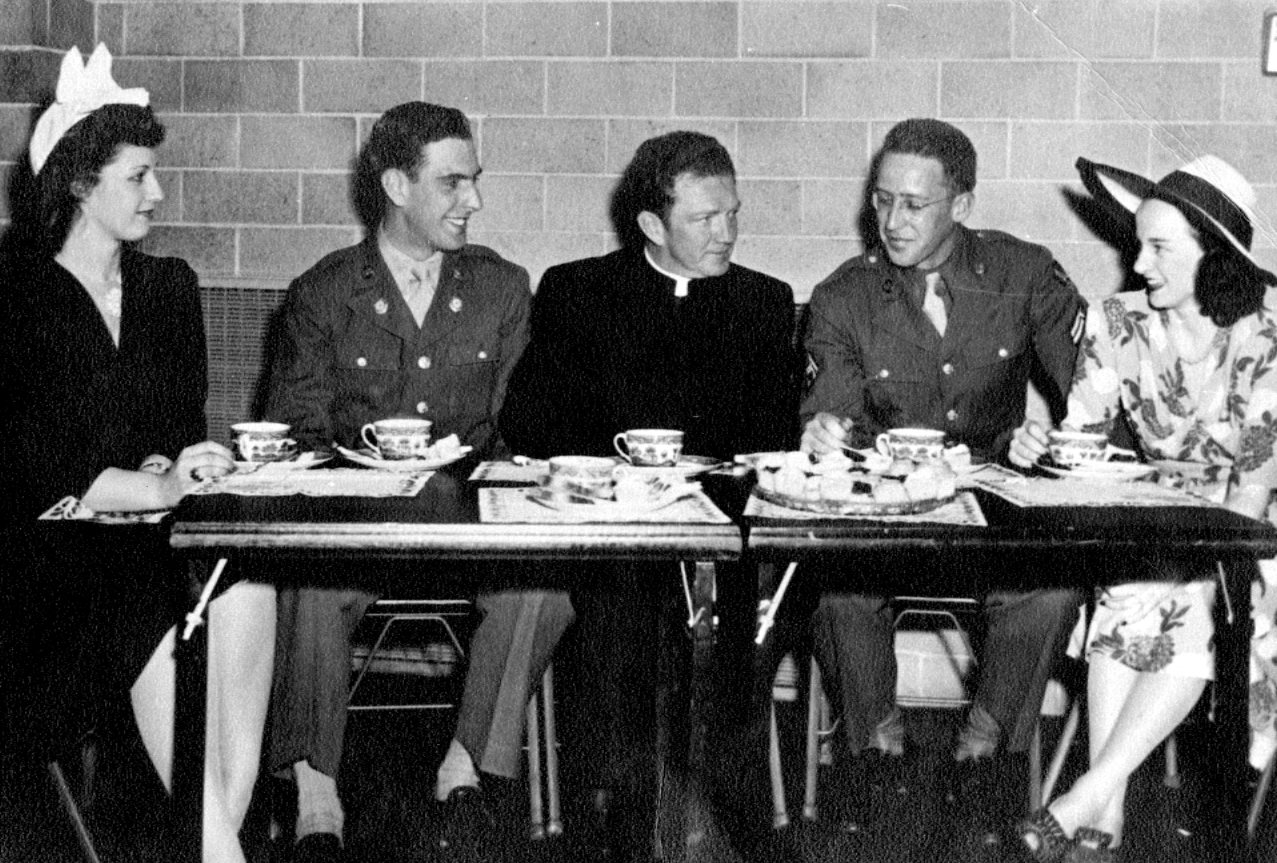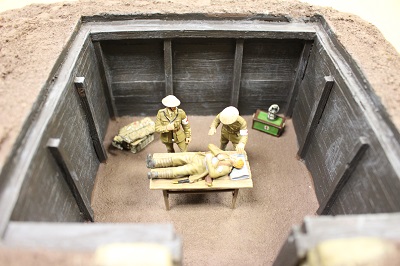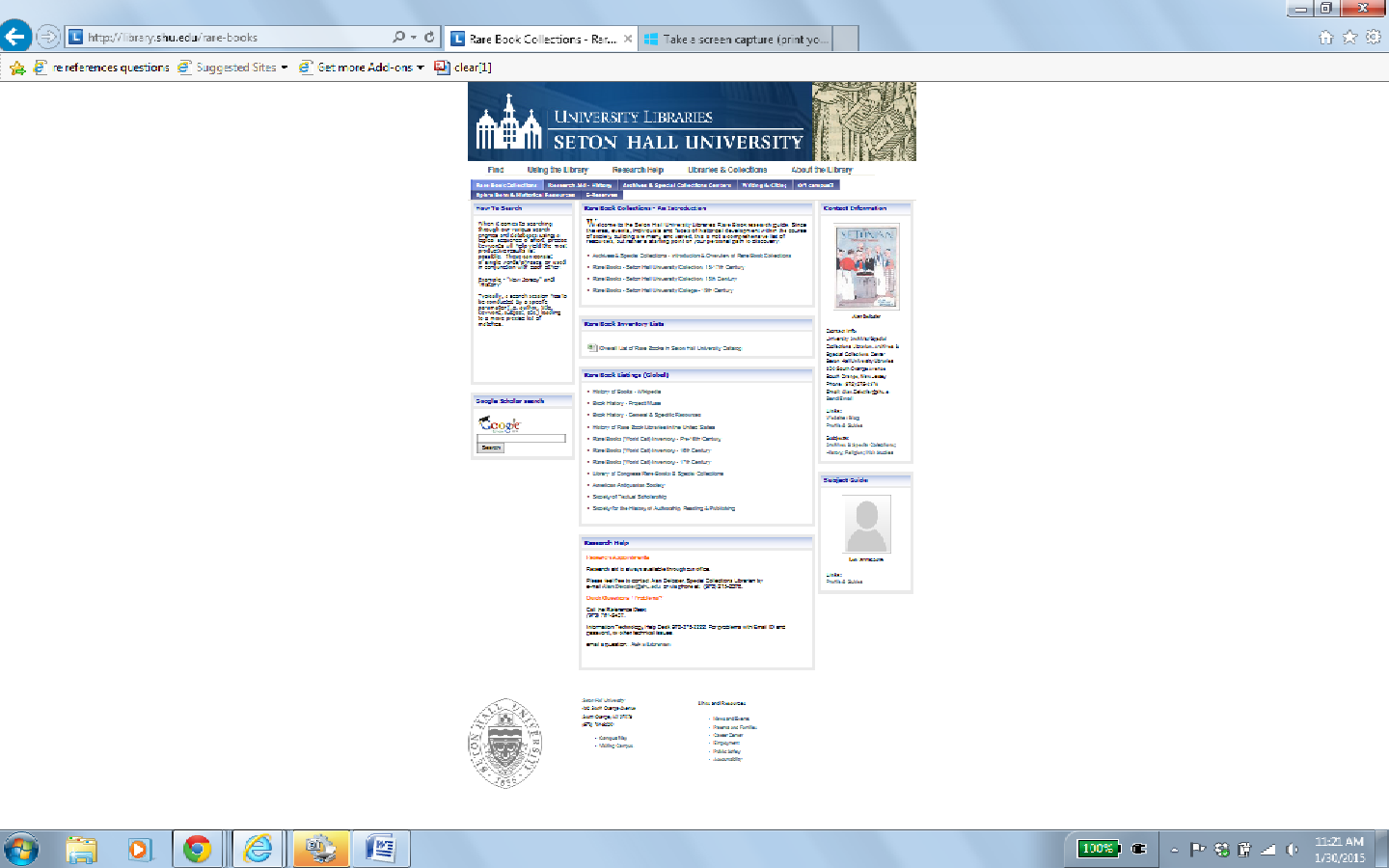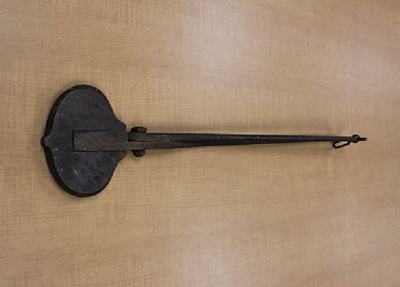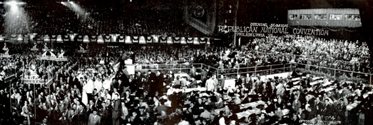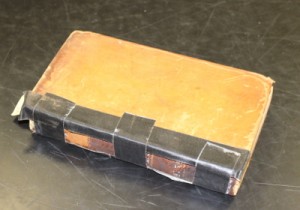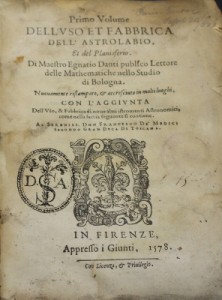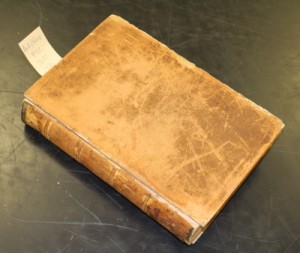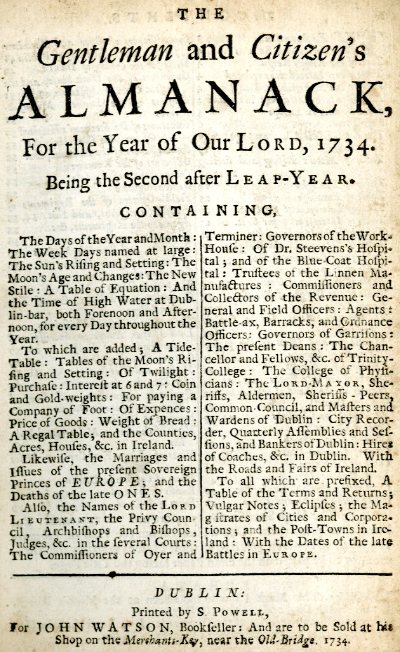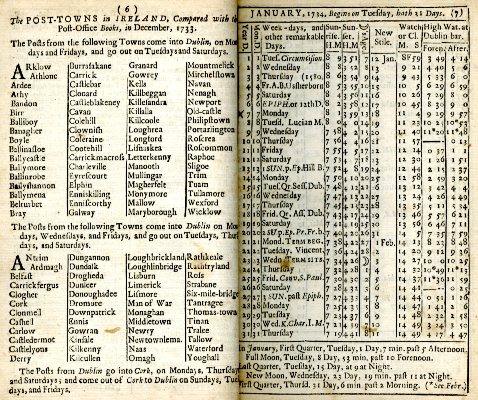Blog
The Third Installment of WWI: A Centennial Exhibition
The third installment of our three-part series commemorating the 100th anniversary of the Great War is now on display in the Msgr. William Noé Field Archives and Special Collections Center, and will remain until 30 April 2015.
This final phase of the exhibit demonstrates the changes that had taken place by the end of the war. Figurines depicting German and British infantry show that despite the technological advances of the war, foot soldiers remained key on both sides. Dioramas and models show the state of medical facilities and care of the wounded, as well as the contribution of women to the war.
Figurines of U.S. infantry and marines highlight U.S. involvement in the WWI. Antique “dime store” toy soldiers made of hollow-cast lead, which became popular after the war, are displayed alongside modern figurines and models. We continue to display rare books from the Archives, which feature photographs, illustrations, and poetry inspired by WWI.
The exhibit can be viewed any time the Walsh Library is open, in the display cases across from Walsh Gallery.
Rare Books Reference Guide – An Introduction
The Monsignor William Noé Field Archives & Special Collections Center has sponsored the work of information professionals who maintain a number of specialized Library Reference Guides (LibGuides) for the benefit of our research community. These LibGuides are designed to provide an introductory navigation site to help with project leads, identify collections, and connect to related themes through the linked resources found on each site.
The latest example created outlines specific Rare Book Collections with different connections to the World Wide Web and designed to help the user learn more about the history of publishing craft and to expand their reference options connected to the Center and beyond. This site focuses upon our major holdings which include the American Civil War, Ireland and Irish-America, Monsignor John Oesterreicher Judaeo-Christian titles along with our overall and more specialized collecting areas that await discovery.
The Internet link to the Rare Book site can be found here and our full range of LibGuides can be accessed here.
Thank you in advance for your interest and usage of our LibGuides!
Communion Wafer Tongs
Did you ever think about how the Communion Wafers used at mass are created? According to church doctrine, the wafers must be made only of pure wheat flour and water. Traditionally, the dough was rolled out flat and squeezed between the two iron plates of baking tongs, such as the example from the Archives pictured below. The plates are embossed in order to separate the wafers from the rest of the dough and add decorative designs.
Originally, a parish would choose a particular baker from the community who was sanctioned to produce the communion wafers using tongs like these. Later, the task of baking the wafers was taken up by cloistered nuns, who were able to produce the wafers on a larger scale and generate income for their convents.
Today, 80% of the wafers in the US market are baked on large scale industrial equipment by the Cavanaugh Company of Greenville, Rhode Island, which boasts that its wafers are “untouched by human hands.” Some convents also carry on the tradition, and have found other ways to compete with private industry. The Benedictine Sisters of Perpetual Adoration in Clyde, Missouri, now produce a low-gluten wafer that is safe for consumption by parishioners with Celiac disease.
We Want Willkie!!!
This was the refrain heard from the floor to rafters of Convention Hall, Philadelphia during the summer of 1940 and echoed through that autumn when the Republican Party nominated corporate lawyer and long time political booster Wendell Lewis Willkie of Indiana as their standard bearer for the upcoming presidential election of that year. Willkie (1892-1944), who never held public office was an outspoken internationalist who later became an informal ambassador-at-large for important causes including global welfare programs and civil rights most notably as outlined in his seminal work: One World(located in the Walsh Library Main Collection, Call Number: D811.5 .W495) which heralded the need for a “world government” to aid society at-large which would later come to fruition in part through the establishment of the United Nations a few years after its publication in 1944.
Willkie focused his run for the White House on three primary themes which included the lack of military readiness in case of war, streamlining the “New Deal” programs of incumbent Franklin D. Roosevelt, and the never before attempted third term candidacy of a sitting president. In the end, Willkie lost the race, but registered 22.3 million votes nationwide (more than any previous Republican candidate at this point) and won 82 electoral votes (plurality in ten states) total.
Although defeated, the successful legacy of Wendell Willkie is celebrated in the Seton Hall Archives & Special Collections Center through the availability of varied resources regarding the candidacy of this icon in American political history. Included are a unique set of scrapbooks donated by Maplewood resident, Mr. Jack Chance who followed this election closely and documented the 1940 race through a collected series of local and national press clippings. Famed funeral director Mr. Gerald Spatola of Newark served as a delegate from New Jersey to the 1940 G.O.P. convention and in turn left a convention book as a reminder of civic activity on a national stage. Additionally, our political science department has collected various campaign buttons over the years and Wendell Willkie figures prominent among them and serves a tangible reminder of his candidacy seven decades ago.  A further point of connections was made more valid and vivid during that fall of 1940 when Willkie in the midst of a national spotlight was invited to visit campus by former College President, James Kelley, but in an October 15th letter from the candidate to the chief executive of Seton Hall he wrote regrets for being unable to make his way to South Orange, but praised the work of the school in a larger context inside the following passage…
A further point of connections was made more valid and vivid during that fall of 1940 when Willkie in the midst of a national spotlight was invited to visit campus by former College President, James Kelley, but in an October 15th letter from the candidate to the chief executive of Seton Hall he wrote regrets for being unable to make his way to South Orange, but praised the work of the school in a larger context inside the following passage…
“As a mid-Westerner, I am of course not intimately familiar with Seton Hall, but I am fully aware of the splendid educational work done by the Catholic clergy at many institutions throughout the land…the College was founded by and named for collateral ancestors of President Roosevelt. I was extremely interested to hear of the pioneer work of Bishop Bayley and Mother Seton in New Jersey. The State and the Nation are profiting greatly from the untiring efforts of these inspired people and others like them…It is hope that the college may long be able to continue its educational and character-building endeavors, that it may never have to encounter the hatreds and oppressions which have perverted or destroyed so many similar institutions in other lands.”
Just like 1940, if you want Willkie and learn more about his life and times please feel free to make an appointment with us to explore in further depth and detail. We can be reached by e-mail: Archives@shu.edu, or by phone: (973) 275-2378. Thank you in advance for your interest.
Book repair and conservation
As like any library, the Archives and Special Collection Center has a number of books in need of repair and conservation. Below are some examples:
This 1787 edition of Notes on the state of Virginia by Thomas Jefferson is currently held together by black book tape and needs to be rebound. The book’s text block (book pages and inner binding) are intact but no longer attached to its front and back covers, the included map of Virginia and neighboring states also has some minor damage. This edition is one of the rare volumes published by Jefferson during his lifetime.
This rare 1578 volume by Ignazio Danti is one of the first Italian works that centers on astromony and the use of the astrolabe. The highly damaged cover and spin are made from vellum and needs to be conserved or replaced. The book has also survived previous water damage and the staining is visible throughout.
Another prevalent issue in rare book collections is ‘red rot,’ which is the degradation process of leather. If stored in the improper conditions the leather can degrade and weaken, producing a powder-like residue which transfers to other books, crumbles onto shelving and generally gets everywhere. The damage is irreversible, but can be somewhat stabilized through conservation. This example is an 1860 edition of the History of the religious Society of Friends by Samuel Janney.
If you are interested in helping the University preserve these irreplaceable works, please consider donating to the Friends of the Archive Fund, contact Director Kate Dodds for more information.
A Look Back at Archdiocesan History: Time Capsule from the Old Chancery Building
On 11 October 1932, the Chancery Building at 31 Mulberry St. was dedicated. The new building replaced the parochial school of St. John’s Church, which housed the Chancery office until the widening of Mulberry St. forced the Diocese to demolish it. At the dedication, a time capsule was placed inside the cornerstone of the building. This time capsule was recovered in 2011, almost 80 years later. Inside, there was a collection of surprisingly well-preserved Diocesan artifacts and ephemera.
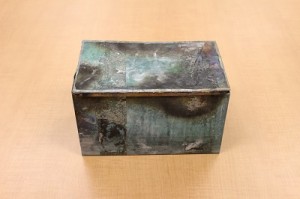
Several news articles relating to the construction and dedication of the new Chancery building, as well as a four page letter detailing the history and circumstances of the Chancery building’s construction, provide context for the time capsule.
The time capsule also contained a photograph of Bishop Thomas J. Walsh, who later became the first Archbishop of Newark when the Diocese was elevated to Archdiocese in 1937. A 1927 medal depicting Immaculate Conception Seminary on one side and Bishop John J. O’Connor on the other was found in its own small case within the time capsule. Bishop O’Connor’s calling card was also enclosed in the case. In addition, there was a small collection of coins, including a Pius X medal, a 1907 quarter, a 1923 buffalo nickel, a 1925 Liberty dime, and a 1901 Liberty nickel. Lastly there were three stamps from 1932: a cancelled Washington stamp, 1¢; postage due stamp, 2¢; and a cancelled Washington stamp, 3¢.
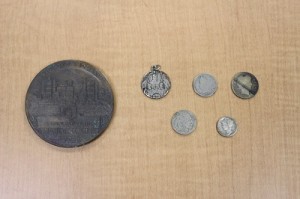
These materials provide a fascinating look back at the history of the Archdiocese of Newark. To learn more visit the Archdiocesan history and archives page, or the A&SCC page on Archdiocesan history.
Seton Hall’s Madison Roots
With the advent of programs like Who Do You Think You Are produced by Lisa Kudrow and Henry Louis Gates’ Finding Your Roots on PBS, genealogy research has become even more popular than before, particularly with more and more resources available online. Did you ever wonder about the genealogical history of Seton Hall?
It may seem when one looks at the campus today as if the college was always here in South Orange. In fact, according to a history of Seton Hall College written in 1895 by then President Rev. William F. Marshall, printed in that year’s catalogue, “When James Roosevelt Bayley [Mother Seton’s nephew] was appointed Bishop of the newly erected See of Newark, New Jersey, October 30th, 1853, he found the diocese poorly supplied with priests and with no Catholic institutions of any kind… save a few scattered churches and chapels.” He decided to establish a college for the education of both secular students and theological students training to be future priests. He and Rev. Bernard J. McQuaid who would one day become both a bishop himself, and the first president of Seton Hall College searched to find a proper location for the college. They settled upon Madame Chegary’s Young Ladies’ Academy in Madison. Madame was relocating her school to New York City, vacating the white frame building that can be seen in a drawing on a sizable map from 1857 that hangs just inside the entrance to the Msgr. William Noé Field Archives and Special Collections Center in the Walsh Library.

The inset drawing seen below of the building amid trees with a horse and carriage in the foreground notes the date Sept. 1856 when the first class of students began their studies – all five of them including Leo G. Thebaud, Louis and Alfred Boisaubin of Madison, John Moore of New York City and Peter Meehan of Hoboken.
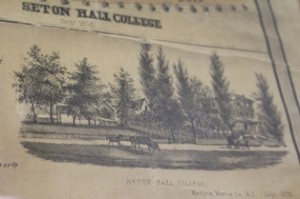
Rev. Marshall tells us, “Before the end of the month twenty additional names were registered,” clearly showing that this new college was filling a need. Bishop Bayley named the college for his aunt, now St. Elizabeth Ann Seton, who preceded him in converting from the Protestant Episcopal Church to Catholicism, and who was the founder not only of the Sisters of Charity, but also of Catholic education in this country.
Bishop Bayley found traveling to his newly established college from Newark by horse and carriage too time consuming, and by 1859 the college had outgrown the small, white building in Madison. Returning from unsuccessful scouting for a new location along the South Orange and Newark Turnpike, Bishop Bayley spied a white marble villa on his right. A Catholic real estate dealer of Valisburg was commissioned to make the purchase of the Elphinstone Manor which stood where Presidents Hall does now.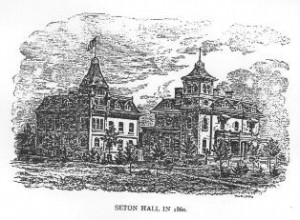 Formal transfer was effected on 2 April 1860, and Seton Hall College moved from Madison to South Orange. The College of St. Elizabeth now occupies the site of the original Seton Hall College where the white frame building still stands.
Formal transfer was effected on 2 April 1860, and Seton Hall College moved from Madison to South Orange. The College of St. Elizabeth now occupies the site of the original Seton Hall College where the white frame building still stands.
To see the map of Madison, please drop in during our hours, M-F, 9-5. We are the Archive for Seton Hall University and for the Archdiocese of Newark, and have an extensive collection of manuscripts, photographs, rare books and artifacts. If you have a paper or project which requires primary source material on the history of Seton Hall University or the Archdiocese, or you wish to research your family history using local Church records, please make an appointment to come in to confer with our staff and use some of the materials we conserve. Contact archives@shu.edu or 973-761-9476.
The Second Installment of WWI: A Centennial Exhibition
The second installment of our three-part series commemorating the 100th anniversary of the Great War is now on display in the Msgr. William Noé Field Archives and Special Collections Center, and will remain until 31 January 2014.
This phase of the exhibit demonstrates many of the technological advances that came about during the war. It includes figurines of German, French, and British soldiers using machine guns and artillery, which came into widespread use during the war.
In addition, model tanks, armored cars, and airplanes highlight the ways these new machines developed and changed warfare. Rare books from our Archives add poetry, photographs, and illustrations of the war to complete the display.
The exhibit can be viewed any time the Walsh Library is open, in the display cases across from Walsh Gallery. It will be followed by the third installment on 1 February 2014.
Annual Accountability – Almanacs in Action
Have you ever imagined living in another time and place? Finding out more about daily routines in the course of recorded history through the words of historians who chronicle the story of human experience are invaluable to the present day reader. Another useful aid is a publication(s) from the actual time period which documents the doings of a person, place, or object first hand. With this in mind, and more specifically, materials that allow for personal reference from an annual perspective such as directories, yearbooks, and most notably almanacs provide the researcher with useful data to learn from by word and number alike.
An “almanac” (or “almanack” or “almanach” as they are sometimes referred to) by definition is an annual publication that provides weather forecasts, tide rates, astronomical data, and other relevant information in tabular form. Modern day almanacs have evolved to include various statistical and descriptive information such as economics, government, religion, and political results among other subject areas that touch not only upon local communities, but national and world issues in brief line item and/or summary form. The earliest known almanac published in the “modern sense” was the Almanac of Azarqueil written in 1088 by Abū Ishāq Ibrāhīm, al-Zarqālī in Toledo, al-Andalus. There have been several subsequent examples from here as found in different countries, languages, and specializations.
One example of an international almanac found in our collection can be located in our rare book collection if you look back 280 years ago at a far different world than the one of today. This volume entitled: The Gentleman and Citizen’s Almanack, For the Year of Our Lord (Dublin: S. Powell, for John Watson, Bookseller to be sold at his shop on Merchants Key, near the Old Bridge, 1734) is a tome that provides a look at 18th century life in Ireland. This book provides a traditional format with the following array of categories found in the index: “Tide Table, Table of Twilight,” “Table of Coin and Gold Weights,” “Table for a Company Foot,” “Table of the Price of Goods,” “Table fo the Weight of Bread,” “Masters and Wardens Quarterly Assemblies,” “Roads of Ireland,” “Fairs of Ireland,” and others. The attached illustrations provide further details on how the consumers of that day and contemporary readers can relate alike can relate to the facts and figures found here including postal service and its value for communication links before cell phones and twitter for example.
This particular publication provides an every day look at life in an Ireland that goes beyond the essay alone. This and other Irish “almanacks” from 1732-1838 and other books on the Irish experience both reference and beyond can be found here in the Monsignor William Noé Field Archives & Special Collections Center.
For more information contact Alan Delozier, University Archivist at: Alan.Delozier@shu.edu, or (973) 275-2378.

